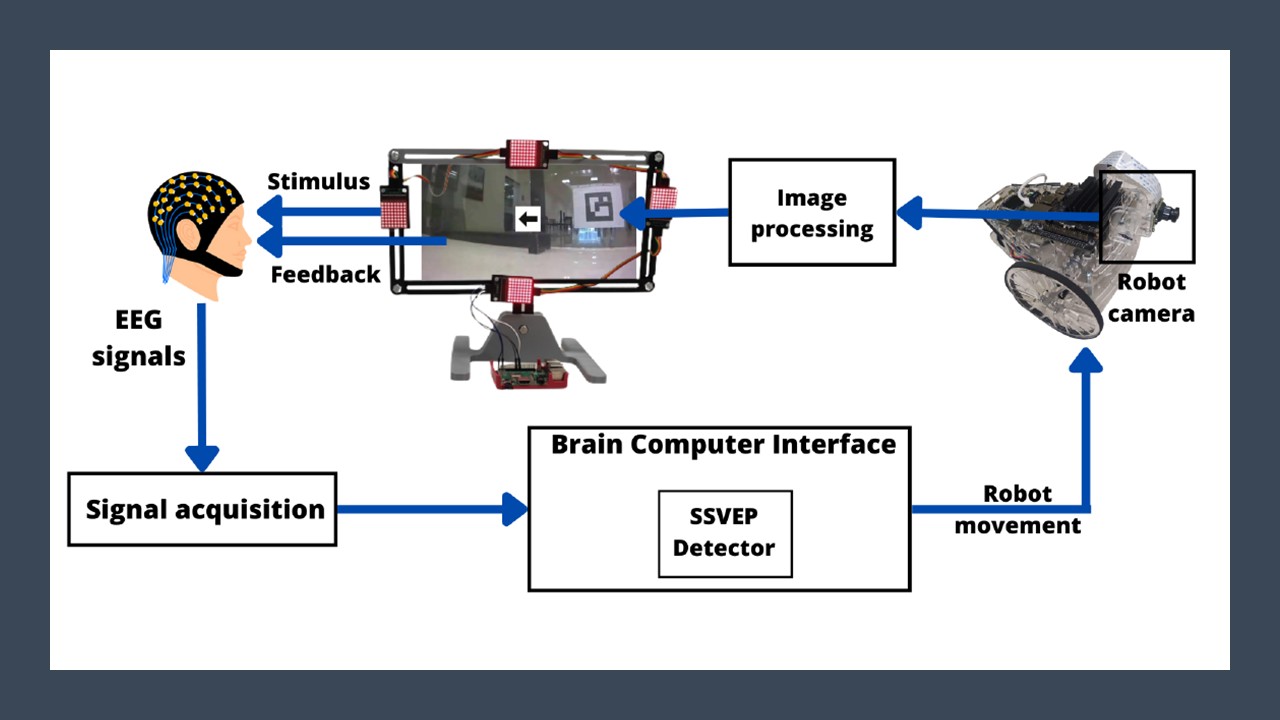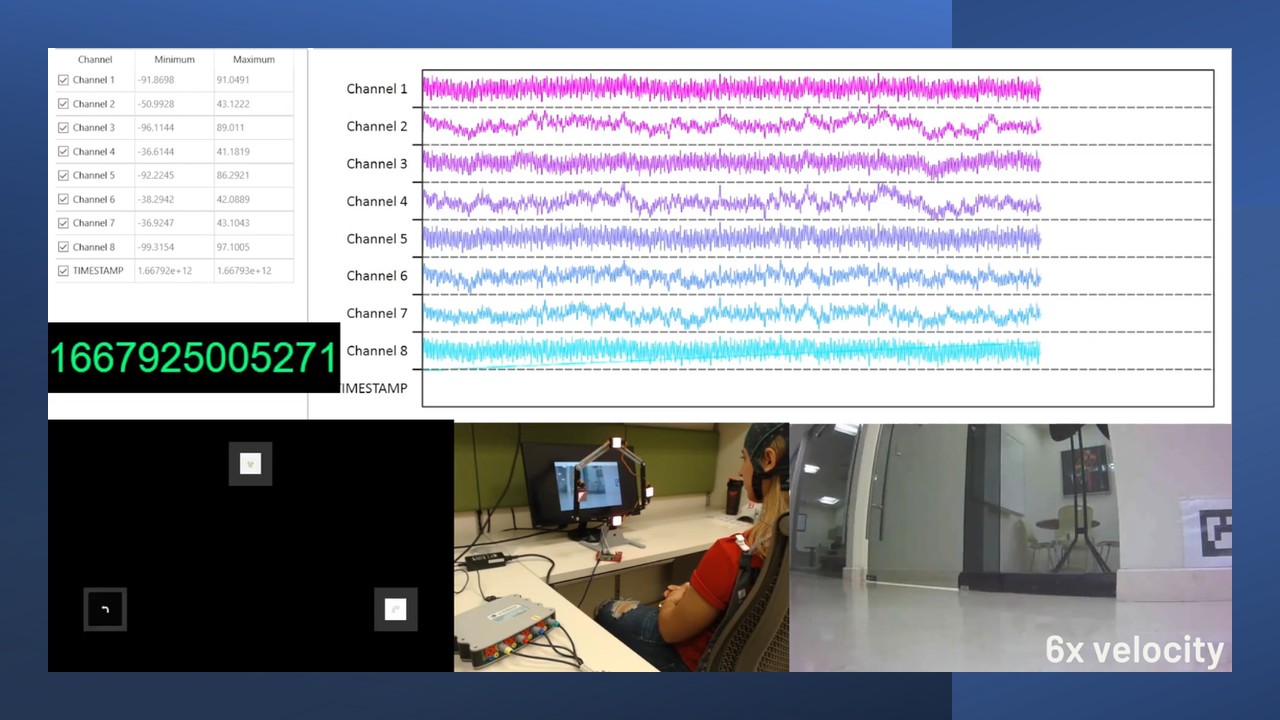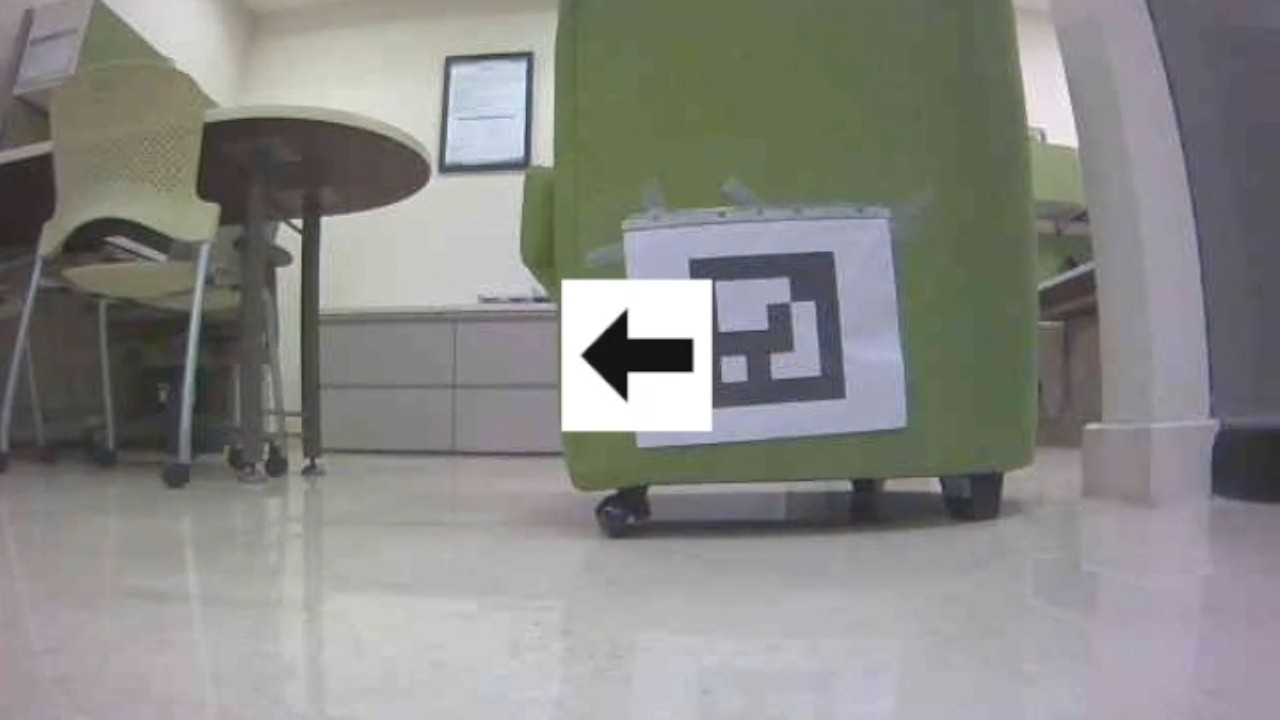AR-assisted navigation of a mobile robot actuated by an SSVEP-based BCI
Brain-controlled robot navigation with augmented reality feedback
AR-assisted Navigation of a Mobile Robot Controlled by an SSVEP-based BCI
In this project, we developed a system that uses a Steady-State Visual Evoked Potential (SSVEP)-based Brain-Computer Interface (BCI) to control a mobile robot. The system allows for active navigation by continuously sending commands to move the robot when a specific command is detected by the BCI. To control the robot, we used three LEDs as visual stimuli (presented in a screen in front of the uder), each corresponding to a different movement: turning left, moving forward, and turning right. A fourth LED was used as a reference to indicate when the user was not sending a command, allowing the robot to stop. The robot was equipped with a camera to live stream its perspective to the user. This live stream was enhanced with Augmented Reality (AR) using ArUco markers, which provided the user with real-time guidance and directions. The goal in this project was to integrate and evaluate the system's usability in real-world scenarios with healthy participants.
System Functionality
- Visual Stimuli: Three LEDs as visual stimuli (left, forward, right)
-
Movement Control:
- Left LED triggers left turn
- Center LED triggers forward movement
- Right LED triggers right turn
- AR Feedback: Live stream enhanced with ArUco markers
- Reference Command: Fourth LED indicates no command (robot stops)
Project Highlights
- Technology: SSVEP-BCI + AR
- Application: Mobile robot navigation
- Key Feature: Real-time AR guidance
Technical Details
System Components
- SSVEP-BCI System
- Visual Stimuli Interface
- Mobile Robot Platform
- AR Guidance System





